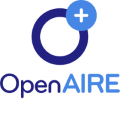TRANSFORMATION OF DIRECT FINANCING METHODS IN OPTIMIZING WAQF ASSET DEVELOPMENT IN MALAYSIA
DOI:
https://doi.org/10.5281/zenodo.15055108Keywords:
Waqf Financing, Direct Financing Methods, Waqf Asset Development, Cash Waqf, Sustainable Waqf ManagementAbstract
Waqf is a significant Islamic institution that has existed since the time of Prophet Muhammad (PBUH) and serves as a vital source of socio-economic empowerment for the Muslim community. In recent years, awareness and understanding of waqf have expanded, leading to an increase in the establishment of waqf assets in various forms. However, financing remains a critical challenge in the development of waqf properties in Malaysia, necessitating the exploration of innovative financing methods. One of the most actively implemented methods is direct financing, which enables efficient fund collection and allocation for waqf asset development. The study aims to identify the types of direct financing methods employed in waqf land development and analyze their implementation in Malaysia. Using a qualitative approach, data were collected through semi-structured interviews with waqf officers and practitioners, along with secondary sources such as academic writings, journals, articles, and institutional websites. Content analysis was applied to evaluate the collected data. The findings indicate that direct financing, particularly through cash waqf, has become a dominant method, facilitating the accumulation of funds for waqf asset development. This transformation has significantly contributed to the effective utilization of waqf land, ensuring its productivity and long-term sustainability. The study highlights the need for continuous improvements in waqf financing strategies to further enhance the role of waqf in socio-economic development. By addressing financing challenges, waqf institutions can optimize the potential of waqf assets, ultimately benefiting the Muslim community and strengthening Malaysia’s waqf sector.
Downloads
Published
How to Cite
Issue
Section
License

This work is licensed under a Creative Commons Attribution-NonCommercial 4.0 International License.





